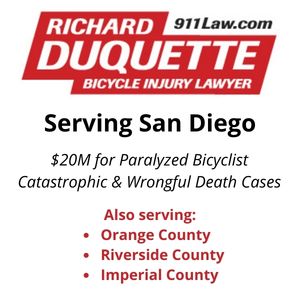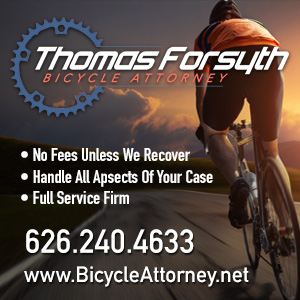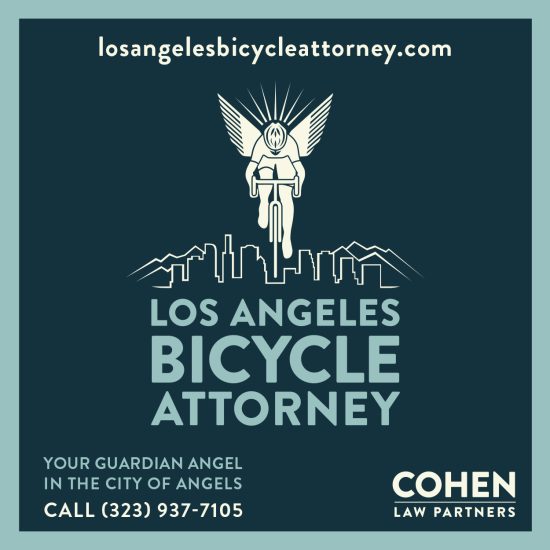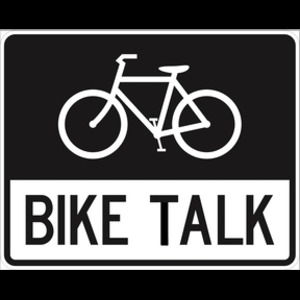As we drove through the Westside this past weekend, my wife and I watched in amazement as one driver after another attempted maneuvers you won’t find in the driver’s manual, with varying degrees of success.
We agreed that the overall quality of driving in L.A. was worse than we’d ever seen it. And it clearly hasn’t gotten any better since.
Take yesterday’s ride, for instance.
It started before I could even get out of the alley behind my building. A driver was trying to back his van around a blind corner from the street into the alley. His view was completely blocked by the building next to me, so he had no idea what, if anything, was behind him — yet he did it anyway.
And what was behind him was me.
So I hugged the side of the building and waited until he finally stopped, then pulled around him, shaking my head as I passed.
Just two blocks later, I waited at a stop sign as a trash truck crossed the street in front of me. Instead of clearing the intersection, though, the driver stopped part way, then backed around the corner onto the street I was on. It wasn’t until he finished backing up and was facing me that he finally saw me there, waiting to cross.
Most drivers would have recognized that I had the right-of-way, and let me go first. Instead, he looked directly at me as he cut me off to complete his three-point U-turn.
A few minutes after that, I crossed Wilshire Blvd on a green light. Just as I reached the other side, a car lurched out from the curb just ahead of me, then stopped, blocking the lane, and cut me off again as he turned left into a driveway. All without signaling, of course.
I don’t know if he didn’t see me, or just didn’t care.
Then at the very next intersection, I pulled up to a four-way stop at the same time that two cars came up to the intersection on the cross street, one behind the other. The first driver looked my way, so I nodded for her to go, then started across the street.
As I was crossing, the second driver looked directly at me, gunned her engine and cut me off as she zoomed through the stop sign just feet in front of me. But evidently, it was okay — in her mind at least — because she gave me the dismissive “so sorry” wave as she passed.
I responded with another kind of wave. And forty-two days of middle-finger sobriety went down the drain.
And that was just first mile of my ride.
By the time I got back home, I’d also encountered a Range Rover — without plates, of course — who cut into the bike lane right in front of me so he could pass a long line of cars that weren’t speeding quite fast enough for him.
Then there was the driver who pulled out from a cross street right in front of me — which another driver waiting to cross in the opposite direction took as her signal to go, even though I was directly in front of her. Fortunately, she stopped just in time, as I braced for the impact.
The winner, though, had to be the driver I encountered on the last leg of my ride as I rode east on Ohio.
I took the lane soon after crossing Westwood Blvd, like I always do. The street is too narrow for cars to pass safely there, while the steep downhill lets me to go as fast, if not faster, than the speed of traffic.
This time, however, the driver behind me tried to pass on the wrong side of the road, even though I was riding at least as fast as the 25 mph speed limit — and common sense — allowed.
We were side-by-side as we went through the intersection at the bottom of the hill. Then she zipped up the next hill and turned left at the next corner, running the stop sign in the process — all without ever coming back to the right side of the road.
Of course, not everyone drives like that.
Even though it seems like a lot, these were just seven drivers out of the thousands I encountered that day — many of whom went out of their way to pass safely or wave me through a challenging intersection.
But the next time someone complains about all those damn law-flaunting cyclists, remind them that we’re not the only ones who do stupid, illegal and extremely dangerous things on the road.
Sure, there are cyclists out there who treat traffic laws with an excessive degree of flexibility.
But safe operation has nothing to do with the number of wheels you travel on.
……..
Brayj gets a neighborhood council to endorse the Cyclists’ Bill of Rights, after biking to the wrong meeting. The Anonymous Cyclist explains how to address the problem of putting 135 mm disk hubs on a 130 mm road bike frame. Santa Clarita ambushes drivers with unannounced bike lanes. Now Hollywood celebs can finally afford to ride along with their dogs; poor people will have to continue holding the leash. Santa Rosa experiments with a Bike Boulevard, proving a city can move forward without making a permanent commitment. A Silicon Valley cyclist bounces back from a near-fatal collision with a drunk driver. Even in Baton Rouge, where I was once regarded as a two-wheeled freak, they’re making room for bikes — maybe there’s hope for L.A. after all. Cycling deaths are up in Seattle despite increased spending to make cycling safer because drivers fail to yield — a $101 ticket. Cyclists attack a Boca Raton driver for passing too close; witnesses say he hit one of the riders. A Staten Island driver faces charges for assaulting a cyclist who tried to make a point by blocking cars from a bike lane. A Texas cyclist gets shot with a pellet gun, and assumes it’s a prank. Finally, it appears to be legal in New York to ram your car into a bicycle and drive 200 feet with the rider clinging to the hood, as long as he isn’t seriously injured. Gentlemen, start your engines — it’s open season on Gotham cyclists.
Like this:
Like Loading...







